50+ Horrific Labor Trafficking Statistics and Examples
Whenever you hear the phrase “human trafficking”, it’s likely that you immediately think of sex trafficking. However, that is only one of many types. The reality is that modern-day slavery can come in many forms in the United States. Labor trafficking is one such form. Here are over 50 statistics on labor trafficking.

Whenever you hear the phrase “human trafficking”, it’s likely that you immediately think of sex trafficking. However, that is only one of many types of human trafficking.
The reality is that modern-day slavery can come in many forms in the United States.
Labor trafficking is one such form.
In such situations, individuals perform labor or services through the use of force, fraud, or coercion. But even under the label of labor trafficking, there are several subcategories.
Labor trafficking includes situations of debt bondage, forced labor, and involuntary child labor. Traffickers keep their victims under their control through the use of violence, threats, lies, and other forms of coercion. This forces the victims to work in many industries against their will.
The National Human Trafficking Hotline (NHTH) receives tips from the public who think they observed a suspicious situation. Most of these cases are sex trafficking cases because people recognize the signs more easily.
With that said, some people do call in about suspicious labor trafficking situations.
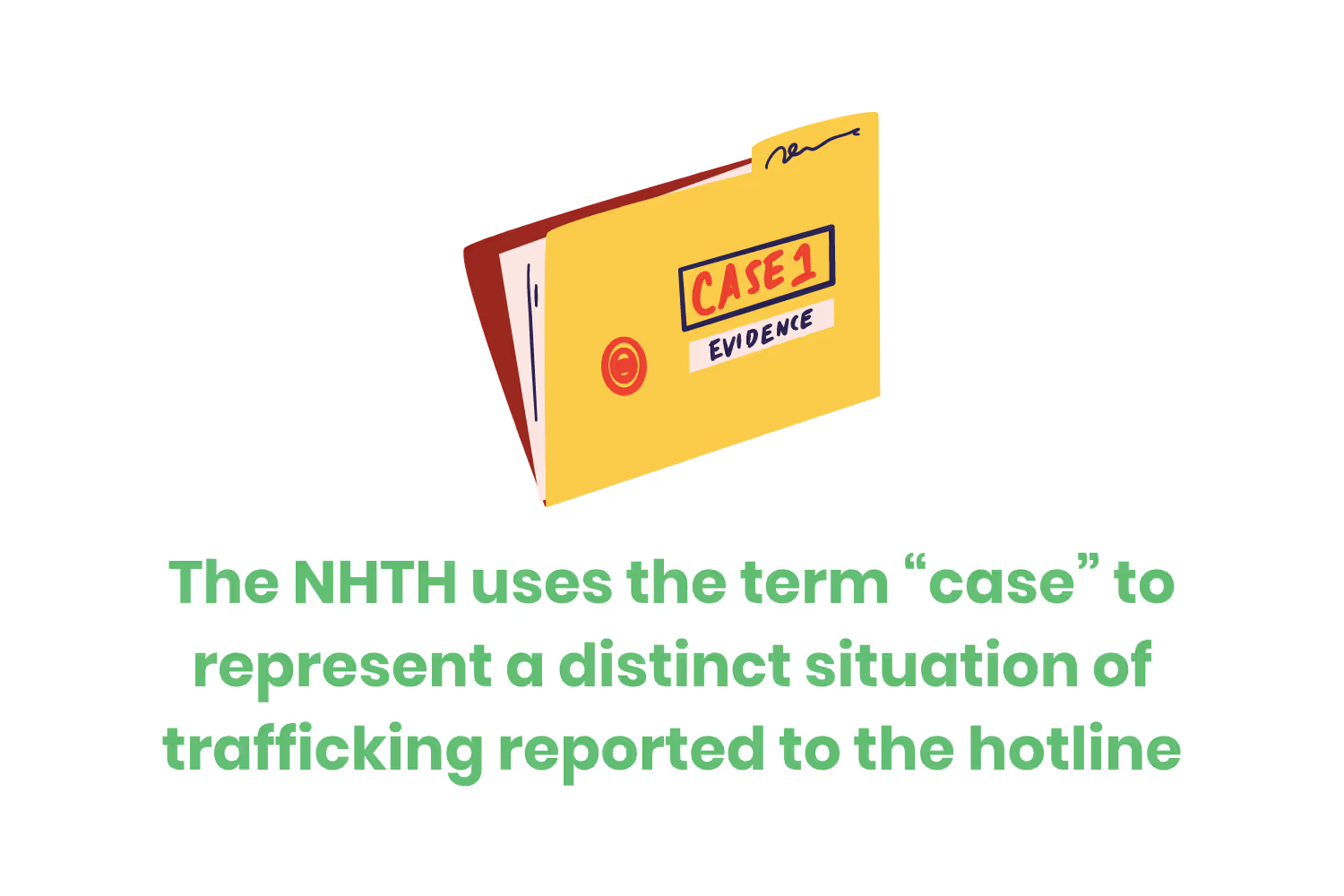
The National Human Trafficking Hotline uses the term “case” to represent a distinct situation of trafficking reported to the hotline.
A case may involve more than one potential victim of trafficking and can appear in multiple signals through several conversations. Just because the NHTH identified a “case” doesn’t mean that law enforcement identified the situation yet or has any involvement in the situation.
Now that you have a basic understanding of what labor trafficking is, let’s look at some labor trafficking statistics to understand how it happens, where it happens, and who is most vulnerable.
General Labor Trafficking Statistics
Before getting into some general labor trafficking statistics, we need to establish some understanding of the landscape as a whole.
The number of human trafficking reports remained consistent during the COVID-19 pandemic compared to pre-pandemic numbers. This means that the world discovered labor trafficking is basically immune to global events. Talk about scary.

- There were 1,052 reported cases of labor trafficking in 2020. (Polaris 2020 Report)
- In 2019, there were 1,231 cases reported across the U.S (NHTH Statistics)
- In 2018, there were 1,237 cases reported across the U.S. (NHTH Statistics)
- There were 3,583 victims of trafficking identified in 2020. (Polaris 2020 Report)
- In 2019, there were 2,516 victims identified with a high indicator rate. (NHTH Labor Trafficking)
- There were another 2,410 victims with moderate indicators.
The pandemic forced the world to shut down many industries and buildings. This led to human traffickers quickly adapting to the new environment. When the government shut down one venue, the traffickers found another.
Victims tend to know their traffickers. There’s a lot of misinformation out there about that statement I just made.
Many people believe that most trafficking situations involve abductions like in the movies. In reality, it’s very rare to find a kidnapping using a white van. The Polaris 2020 Report provided the following statistics...
- 69% of labor trafficking victims got recruited by a potential or current employer.
- 15% of cases involved recruitment by a family member.
- An intimate partner or marriage proposition lured 5% of labor victims into trafficking.
- The proportion of people recruited into labor trafficking by an intimate partner jumped from 22% in 2019 to 27% in 2020.
- This is a 21% increase.
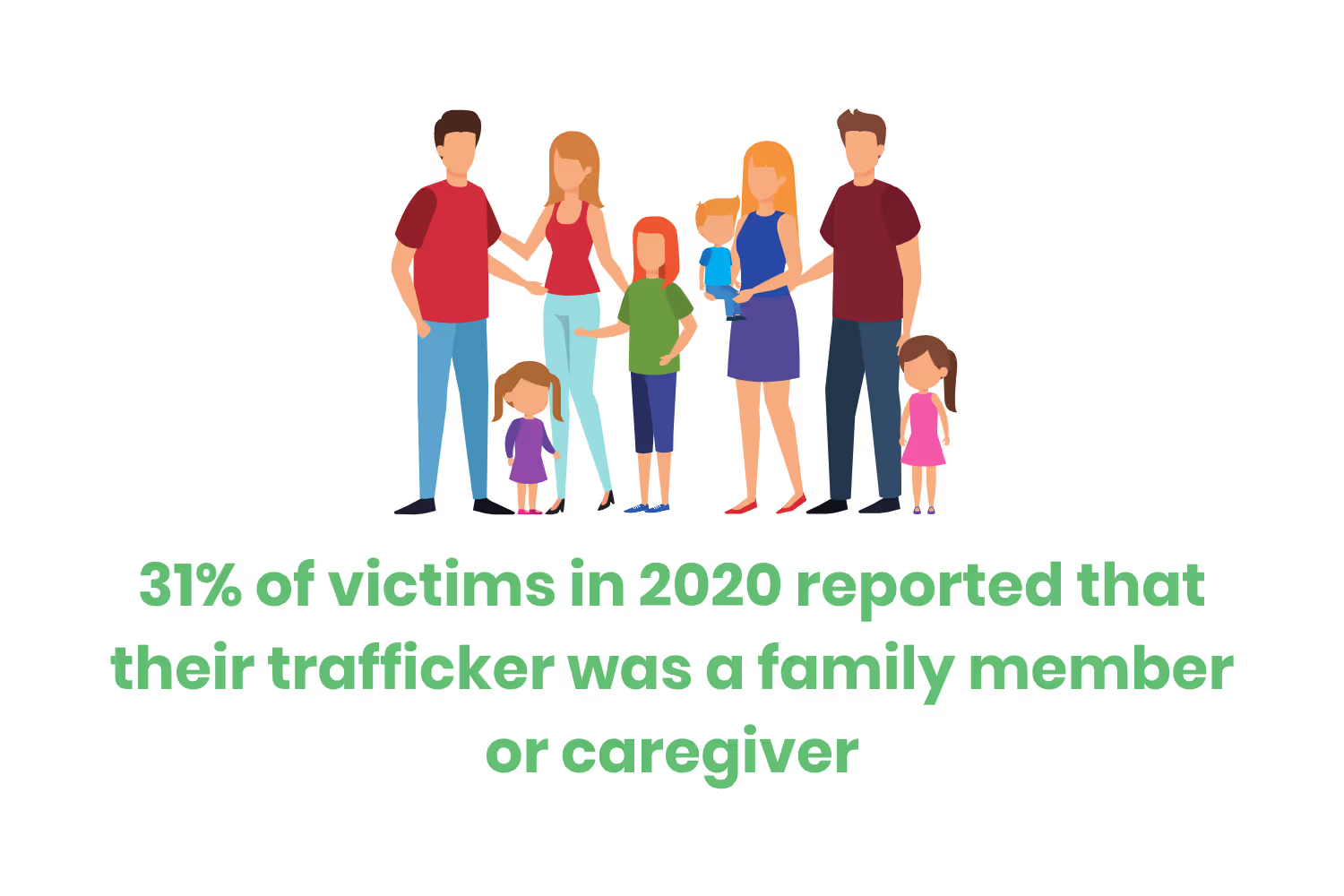
- 31% of victims in 2020 reported that their trafficker was a family member or caregiver.
- In 2019, only 21% reported the same.
- This is a 47% increase in a year.
There’s also a big misconception about who the victims are. Many people believe that victims are female children forced to perform sex acts.
In the world of labor trafficking, things are a bit different. The National Human Trafficking Hotline and Polaris Project provided the following labor trafficking statistics…
- In 2019, 682 cases involved female victims.
- Another 556 victims involved male victims.
- Less than three cases
- In 2019, 859 cases involved adults.
- Another 177 cases involved minors.
- 638 cases involving foreign nationals.
- Another 115 cases involved U.S. citizens.
- The top 5 nationalities of victims were…
- Philippines
- Mexico
- United States
- India
- Columbia
- The top 5 nationalities of traffickers are…
- United States
- Saudi Arabia
- Mexico
- Qatar
- Philippines
Lastly, it’s important to understand where labor trafficking takes place. Unfortunately, the answer is everywhere.
That said, some places have higher rates of labor trafficking than others. The top five states for labor trafficking in 2019 were…
- California with 157 identified cases
- Florida with 131 identified cases
- Texas with 112 identified cases
- Georgia with 74 identified cases
- New York with 51 identified cases
As you can see, there are some unique patterns among these states. All of these states are on the edge of the U.S. All of them have access to the ocean, which means that they all have some sort of port access. This also explains why so many labor trafficking cases are foreign nationals who are most likely coerced into coming to the U.S.
Top 5 Risk Factors for Labor Trafficking
Most victims of labor trafficking are not abducted and forced to work for evil corporations with no soul. They found it is much more efficient to use manipulation, coercion, and fake promises to lure people into the trafficking trap.
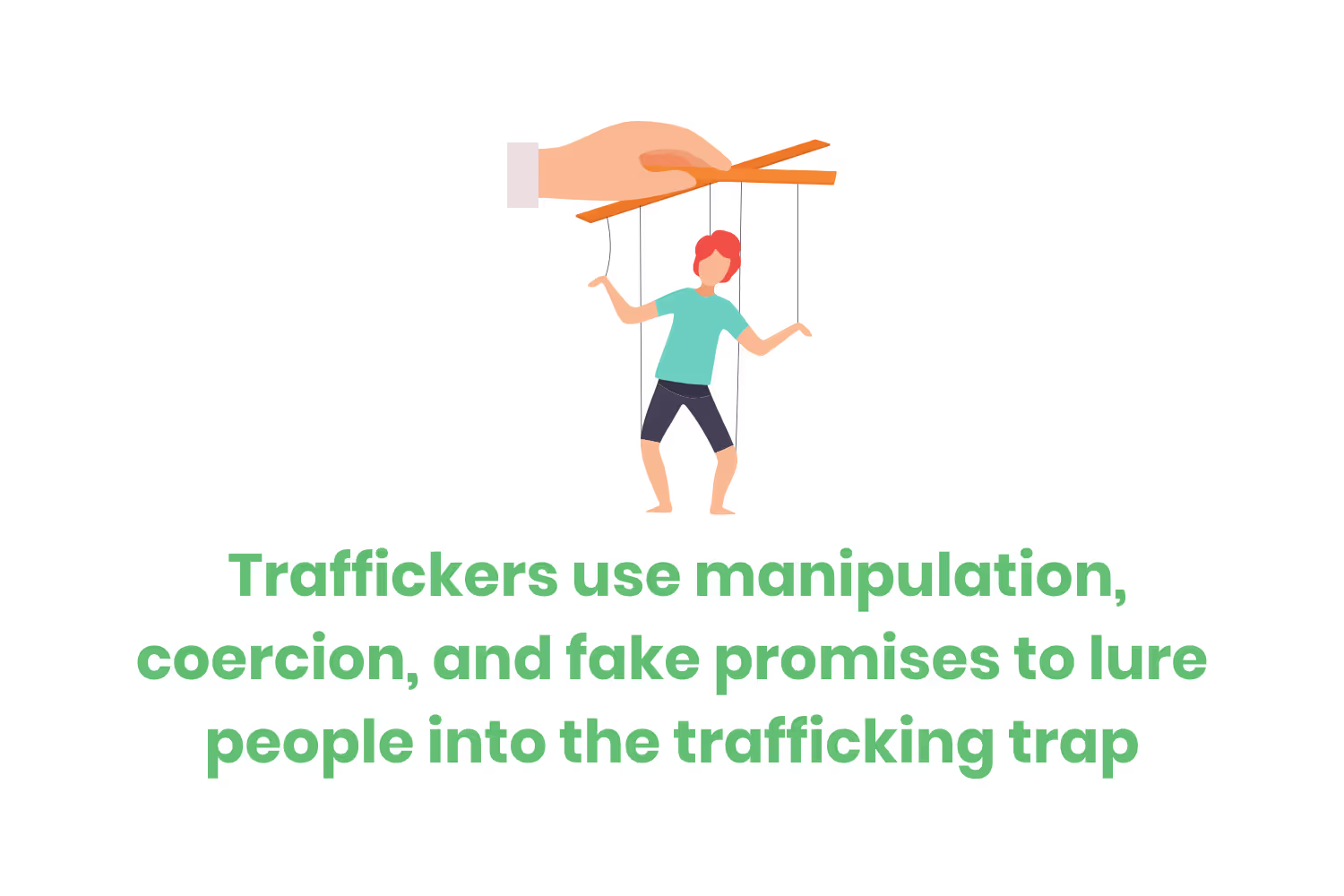
To effectively coerce and lure people into slavery, traffickers need to find specific vulnerabilities to prey upon. They purposefully exploit this vulnerability.
Just about everyone who ends up as a victim of human trafficking has an identifiable vulnerability the trafficker exploited. Year over year, the proportions of these vulnerabilities stay relatively consistent, including through the COVID-19 pandemic.
The top 5 risk factors and vulnerabilities targeted by labor traffickers include…
- Recent migration or relocation
- Self-reported economic hardships
- Unstable housing
- Criminal records or criminal history
- Substance use concerns
Top Industries for Labor Trafficking
Labor trafficking, like other forms of human trafficking, tends to pop up in certain industries. People are often forced to work as domestic servants. Traffickers coerce farm workers through violence as they harvest crops. Trafficked factory workers live in inhumane conditions with little pay and no hope of escape.
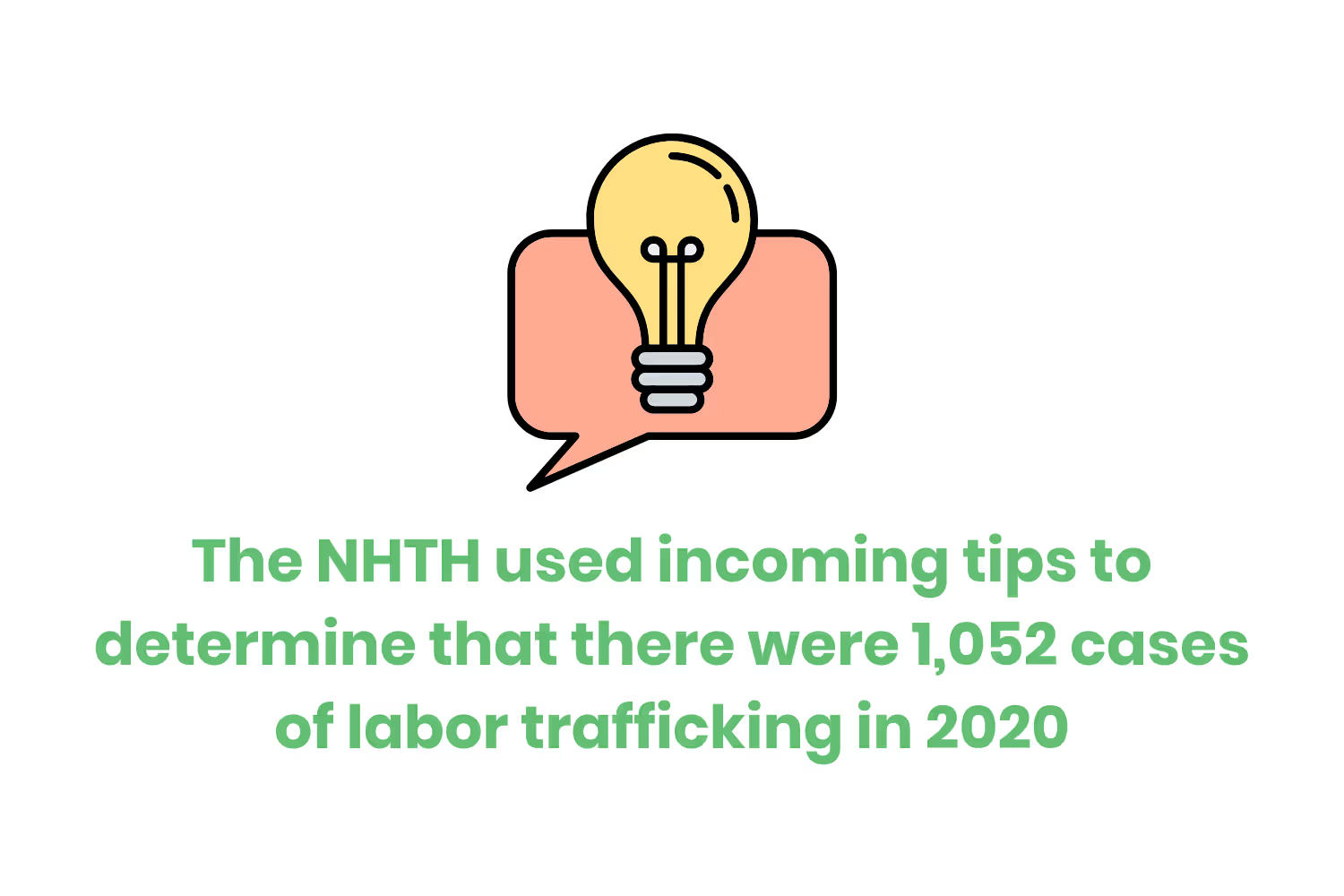
In 2020, various tips to the NHTH gave the organization information about various labor trafficking instances.
As I mentioned above, the Hotline used this information to determine that there were 1,052 cases of labor trafficking. These cases almost certainly involve several victims, especially when you consider how many people it takes to harvest a field or manufacture goods in a sweatshop.
The top venues and industries for labor trafficking cases are as follows…
- 202 cases involved domestic work
- 83 cases involved agriculture
- 65 cases involved construction
- 62 cases involved illicit activities
- 60 cases involved traveling sales crews
Labor Trafficking Example: Domestic Work
Experts estimate that 37% of labor trafficking victims find themselves performing domestic work.
The NHTH learned of 955 cases, with 1,211 victims, between 2013 and 2017 in the domestic work industry. 93% of these victims endured forced labor services.
The other 7% dealt with labor services and commercial sex acts with their trafficker or other partners.
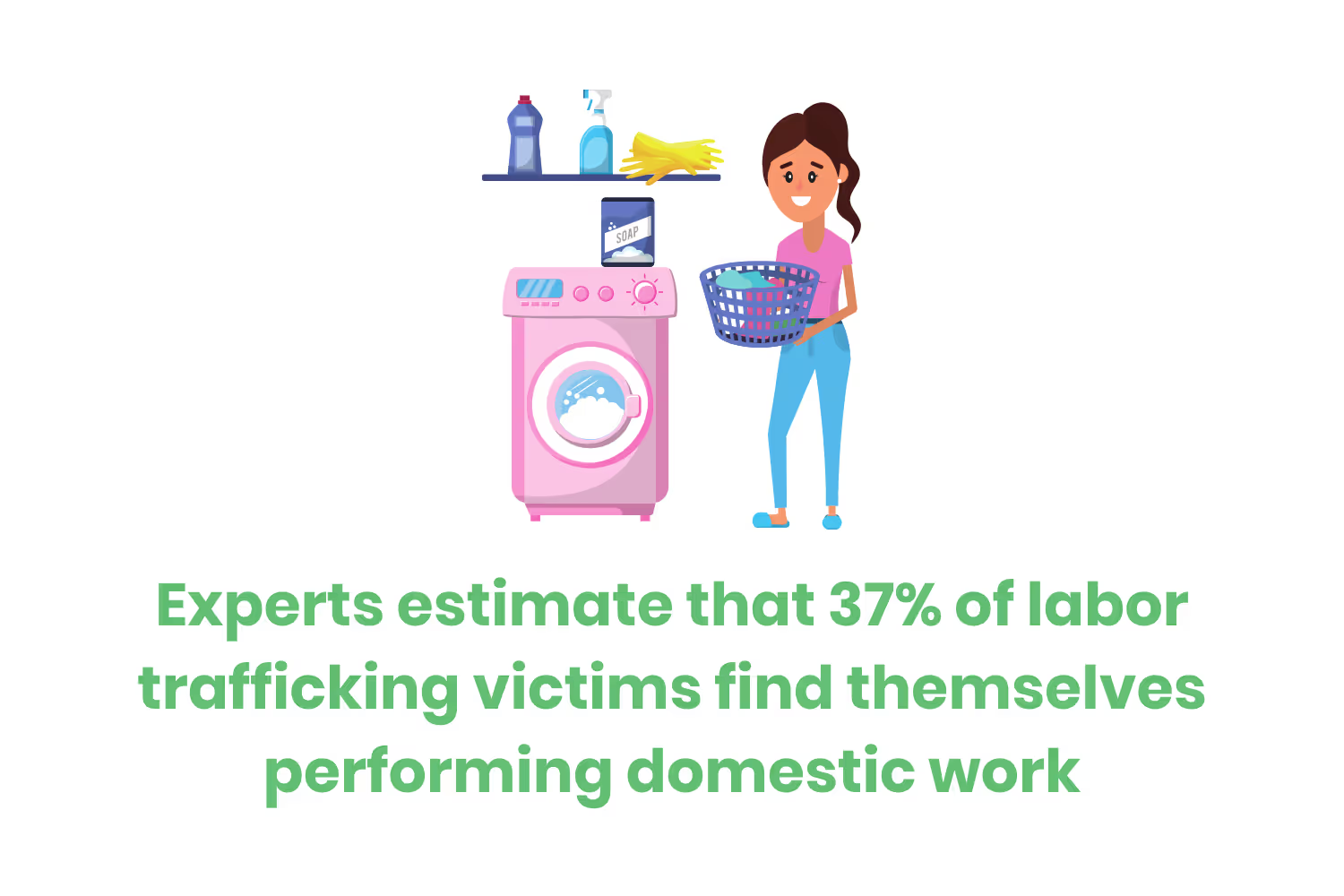
The hotline received details about 82% of the victims. Through the various reports, we learned that…
- 56% of the victims were housekeepers or cleaners.
- 24% involved nannies or child-care providers.
- 8% of the victims had to care for adults.
- 5% had to complete house retails.
- An additional 7% have the classification of “other”, such as providing child transportation or dog walking.
We know this information because various people made contact with the National Human Trafficking Hotline. The hotline was able to identify the 955 cases because people called in to report what was happening.
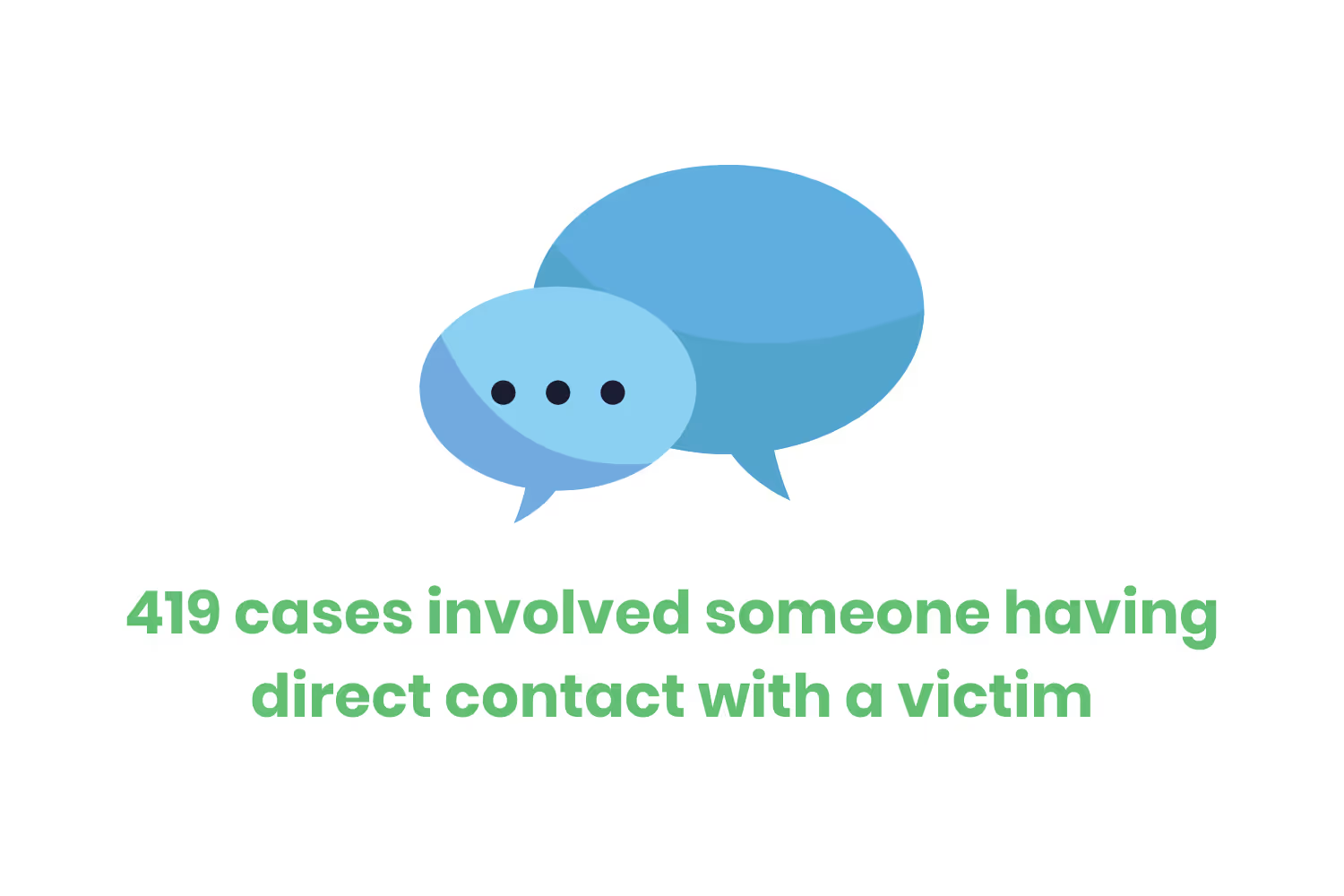
They received signals because…
- 459 cases victims self-reported the situation.
- 419 cases involved someone having direct contact with a victim.
- 107 cases involved someone having indirect contact with a victim.
- 45 cases of someone observing suspicious activity.
We also know the relationship between the trafficker and the victims because of reports.
- 61% of traffickers were some sort of employer or recruiter.
- 26% of traffickers are family members or intimate partners of the victim.
- 12.86% of traffickers were smugglers.
- Less than 1% of traffickers were landlords.
Labor Trafficking Example: Agricultural
About 19% of labor trafficking victims find themselves as migrant and seasonal farm workers.
Agricultural labor trafficking victims include men, women, families, and children as young as 5 years old. The victims harvest crops and raise animals in fields, packing plants, orchards, and nurseries.
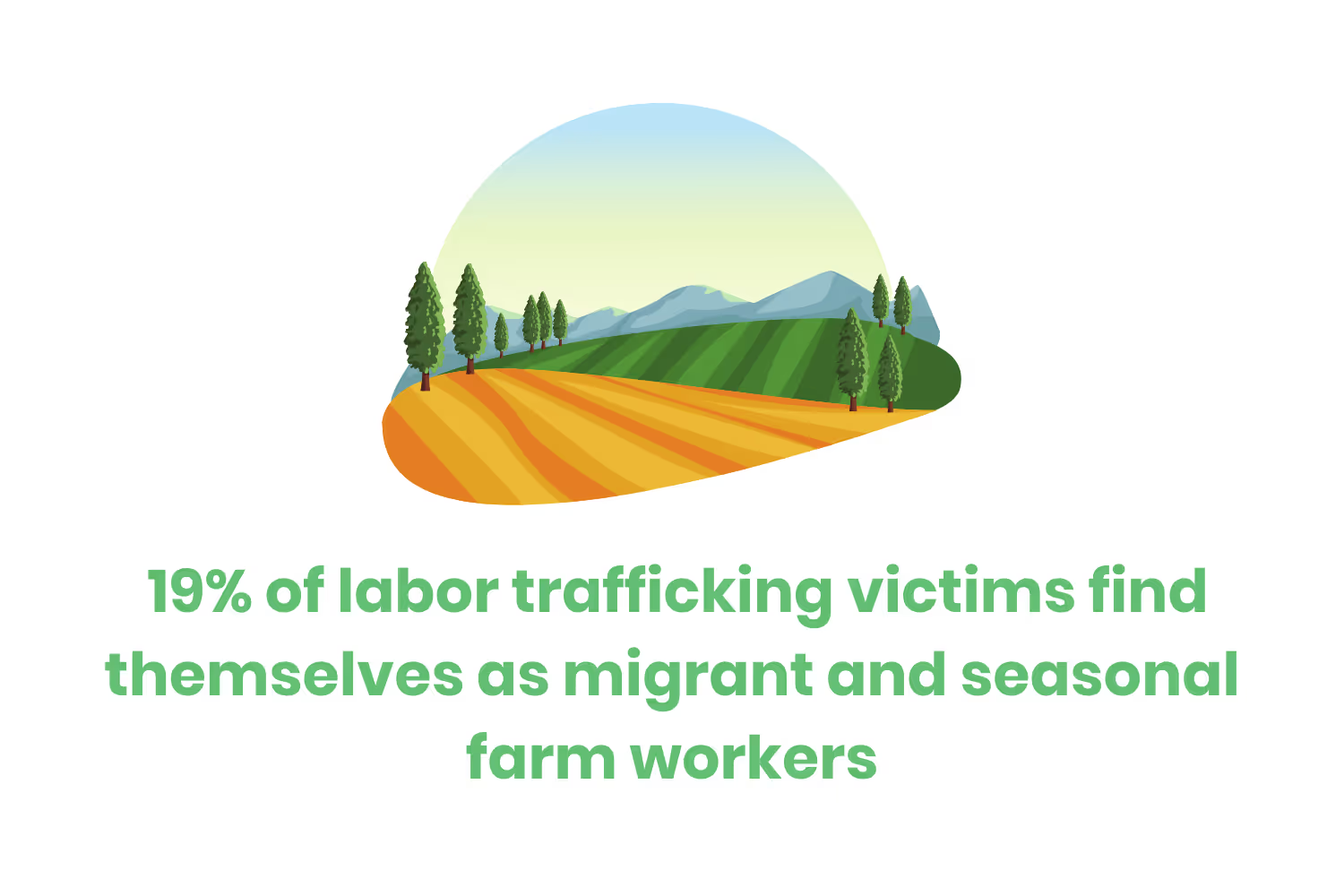
Due to the harvesting seasons, agricultural labor trafficking is irregular. It has peaks and lulls in “employment” due to the nature of the industry.
This said many people come into the U.S. seeking employment. Many people do this legally and choose to work in the agricultural industry. So when does it become human trafficking?
The answer is one I’m sure you have heard before: force, fraud, and coercion.
Farmworkers frequently face situations that involve exploitative treatment and abuse. This turns into human trafficking when force, coercion, and fraud are tactics used to maintain control over the victim. The victims believe that they have no choice but to continue the work.
Common elements of force include…
- Isolation at migrant camps and rural areas
- Control over transportation
- Restricted communication with outsiders
- Physical or sexual abuse
- Employer’s disregard for health-related injury or illness
- No protection against dehydration or overexposure
Common elements of fraud include…
- False promises of a job
- Altered contracts and pay statements
- Unreasonably high recruitment fees for jobs that pay low wages
Common elements of coercion include…
- Threats of deportation
- Threats of harm to the victim or their families
- Document confiscation
- Manipulation of the debt taken on to obtain the job
- Continual verbal abuse or psychological abuse meant to elicit cooperation
- Debt bondage through high fees for rent, food, tools, transportation, and other expenses.
Labor Traffickign Example: Sales
Sales crews and peddling/begging rings are popular venues traffickers choose to traffic victims. In this industry, victims work long hours each day soliciting money or selling products.
To keep the victims in check, the traffickers will often confiscate most or all of the victim’s earnings and make the victims dependent on the trafficker. They will start to rely on the trafficker for housing, transportation, and food. Tactics such as sexual assault, pressure tactics, abandonment in unfamiliar cities, and violence are also used to keep the victims under control.
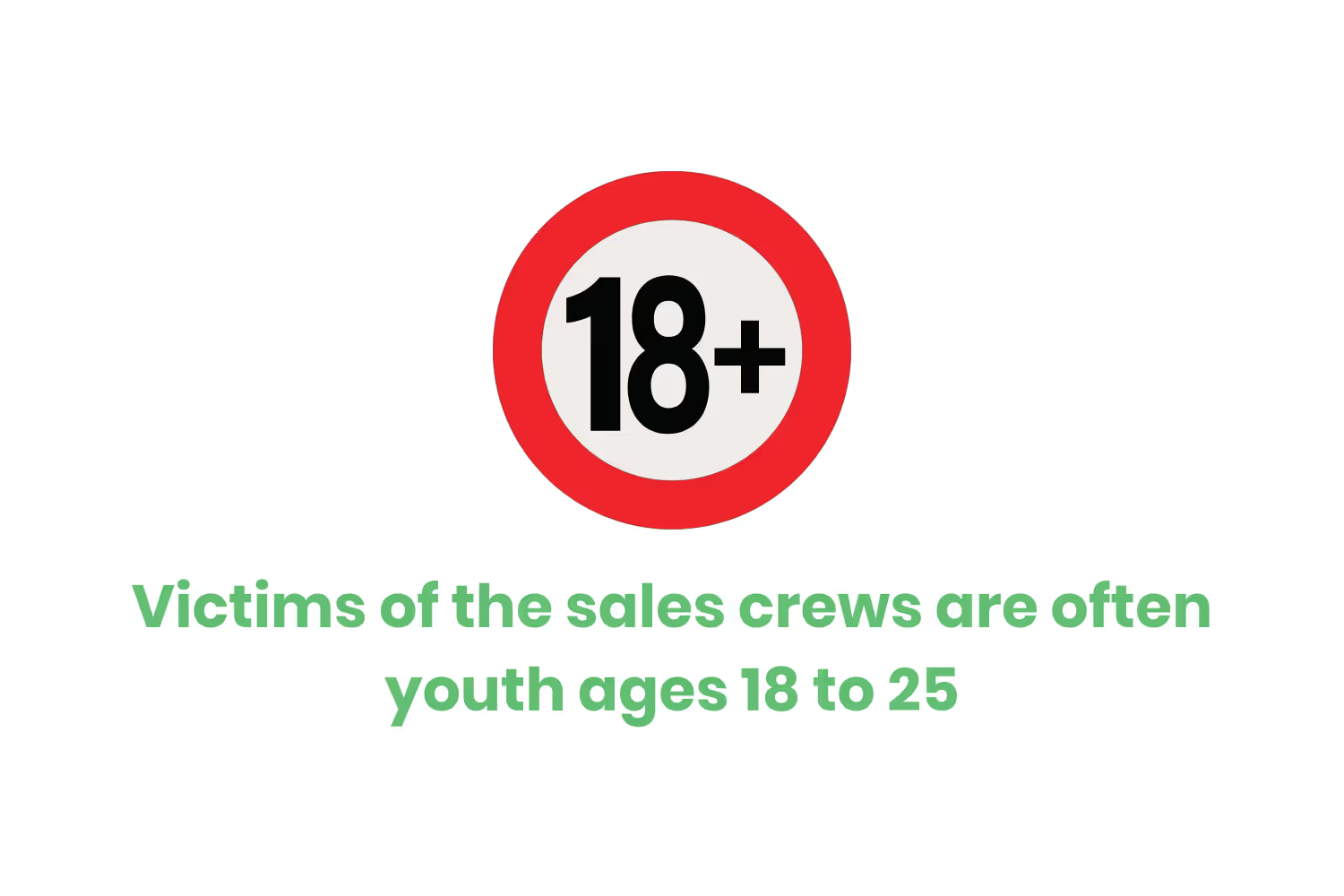
Victims of the sales crews are often youth ages 18 to 25. That's why they become reliant on the trafficker; they don’t have a place to call their own or a financial cushion to support themselves.
Now when I say “crew”, I mean a group of 3 to 40 youths under the direction of a manager. The group will move from city to city every few weeks. Normally, a sales crew will earn a small daily stipend of $8-15 to cover the cost of meals and personal items, although the stipend is sometimes lower.
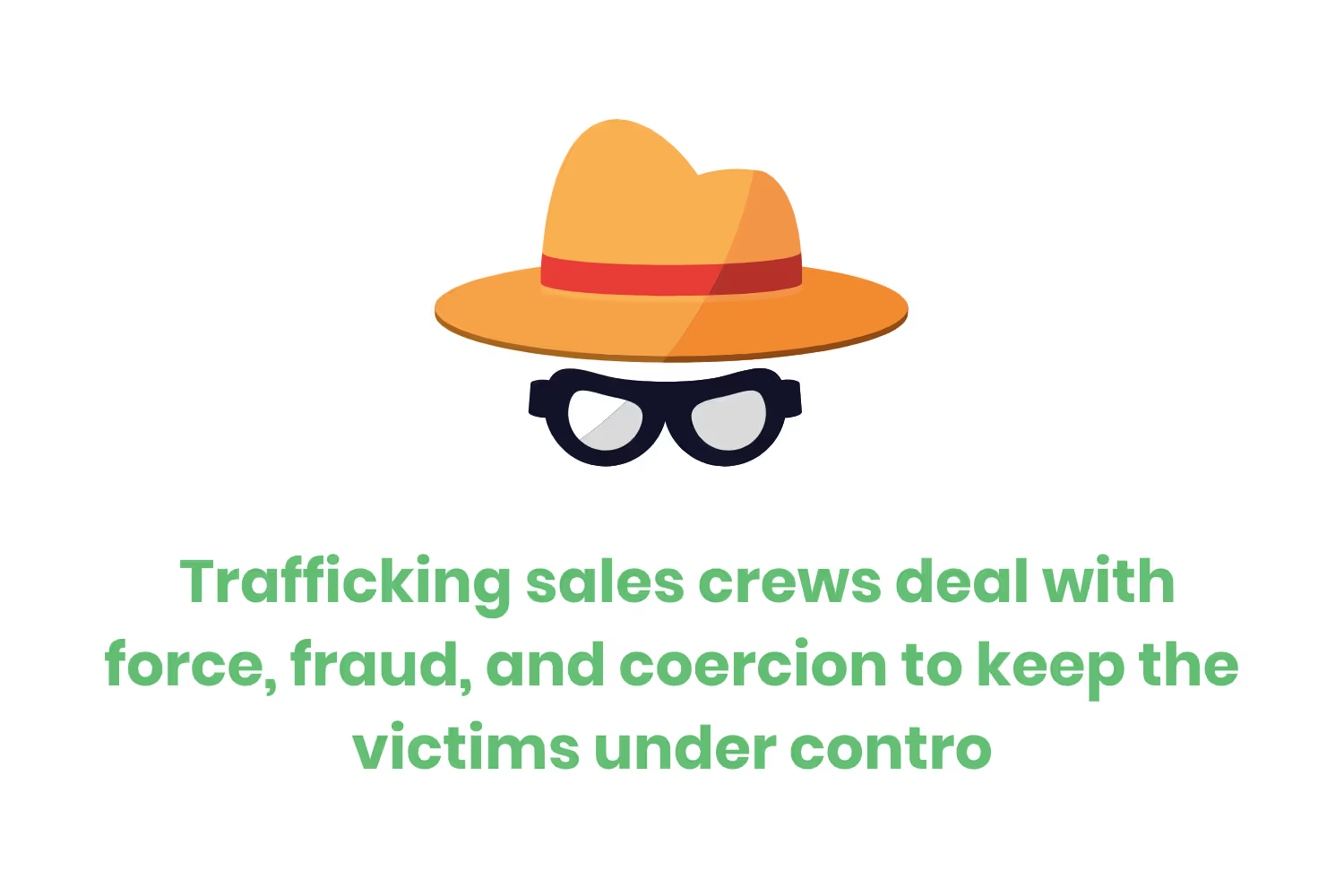
Like other forms of trafficking, trafficking sales crews deal with force, fraud, and coercion to keep the victims under control. However, the tactics of traveling sales crews are slightly different compared to other industries.
Examples of force used against sales crew victims include…
- Isolation and removal from familiar surroundings
- Physical and sexual abuse
- Abandonment for non-compliance
- Intentional dehydration and overexposure
Examples of fraud used against sales crew victims include…
- False promises of an opportunity to travel the country
- False promises to earn money quickly
- Misrepresentation of the work, working conditions, wages, or immigrant benefits
- Visa fraud
Examples of coercion used against sales crew victims include…
- Elaborate systems of rewards and punishments
- Threats of harm to the victim
- Threats of harm to the victim’s family
Conclusion
Unfortunately, human trafficking happens everywhere across the United States and beyond.
Labor trafficking is also often hard to identify. Employers trafficking their laborers often keep the victims isolated, preventing them from seeking help. Additionally, many labor victims may not speak English well enough to ask for help.
Labor trafficking victims who interact with the public often keep quiet because of threats made to them or their families.
With so much secrecy, isolation, and threats to safety, it’s hard for the public to send the National Human Trafficking Hotline and local police tips about the illegal situation.
Despite employers’ best efforts to conceal their involvement in trafficking, people still manage to send invaluable information to the relevant authorities.
The process to end labor trafficking is long and riddled with complications. By educating yourself about the situation with the labor trafficking statistics above, you are better equipped to help end trafficking.
Emphasize your product's unique features or benefits to differentiate it from competitors
In nec dictum adipiscing pharetra enim etiam scelerisque dolor purus ipsum egestas cursus vulputate arcu egestas ut eu sed mollis consectetur mattis pharetra curabitur et maecenas in mattis fames consectetur ipsum quis risus mauris aliquam ornare nisl purus at ipsum nulla accumsan consectetur vestibulum suspendisse aliquam condimentum scelerisque lacinia pellentesque vestibulum condimentum turpis ligula pharetra dictum sapien facilisis sapien at sagittis et cursus congue.
- Pharetra curabitur et maecenas in mattis fames consectetur ipsum quis risus.
- Justo urna nisi auctor consequat consectetur dolor lectus blandit.
- Eget egestas volutpat lacinia vestibulum vitae mattis hendrerit.
- Ornare elit odio tellus orci bibendum dictum id sem congue enim amet diam.
Incorporate statistics or specific numbers to highlight the effectiveness or popularity of your offering
Convallis pellentesque ullamcorper sapien sed tristique fermentum proin amet quam tincidunt feugiat vitae neque quisque odio ut pellentesque ac mauris eget lectus. Pretium arcu turpis lacus sapien sit at eu sapien duis magna nunc nibh nam non ut nibh ultrices ultrices elementum egestas enim nisl sed cursus pellentesque sit dignissim enim euismod sit et convallis sed pelis viverra quam at nisl sit pharetra enim nisl nec vestibulum posuere in volutpat sed blandit neque risus.

Use time-sensitive language to encourage immediate action, such as "Limited Time Offer
Feugiat vitae neque quisque odio ut pellentesque ac mauris eget lectus. Pretium arcu turpis lacus sapien sit at eu sapien duis magna nunc nibh nam non ut nibh ultrices ultrices elementum egestas enim nisl sed cursus pellentesque sit dignissim enim euismod sit et convallis sed pelis viverra quam at nisl sit pharetra enim nisl nec vestibulum posuere in volutpat sed blandit neque risus.
- Pharetra curabitur et maecenas in mattis fames consectetur ipsum quis risus.
- Justo urna nisi auctor consequat consectetur dolor lectus blandit.
- Eget egestas volutpat lacinia vestibulum vitae mattis hendrerit.
- Ornare elit odio tellus orci bibendum dictum id sem congue enim amet diam.
Address customer pain points directly by showing how your product solves their problems
Feugiat vitae neque quisque odio ut pellentesque ac mauris eget lectus. Pretium arcu turpis lacus sapien sit at eu sapien duis magna nunc nibh nam non ut nibh ultrices ultrices elementum egestas enim nisl sed cursus pellentesque sit dignissim enim euismod sit et convallis sed pelis viverra quam at nisl sit pharetra enim nisl nec vestibulum posuere in volutpat sed blandit neque risus.
Vel etiam vel amet aenean eget in habitasse nunc duis tellus sem turpis risus aliquam ac volutpat tellus eu faucibus ullamcorper.
Tailor titles to your ideal customer segment using phrases like "Designed for Busy Professionals
Sed pretium id nibh id sit felis vitae volutpat volutpat adipiscing at sodales neque lectus mi phasellus commodo at elit suspendisse ornare faucibus lectus purus viverra in nec aliquet commodo et sed sed nisi tempor mi pellentesque arcu viverra pretium duis enim vulputate dignissim etiam ultrices vitae neque urna proin nibh diam turpis augue lacus.




